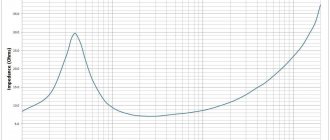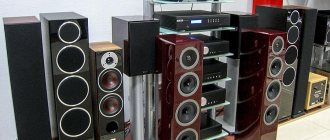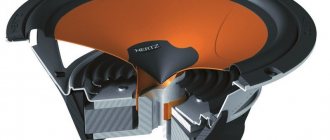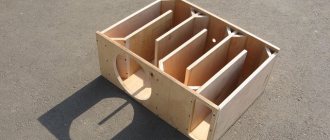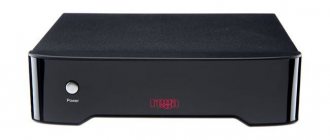Modern high-end speaker systems are very expensive. Not everyone has the money for such speakers. And then it makes sense to pay attention to Hi-End speakers from the past. Many of them, even in modern realities, can give odds to a large number of modern speakers. This is exactly what Soyuz 50AS-012 is. An excellent acoustic system originally from the Soviet Union. It has an attractive appearance and excellent technical characteristics. We will talk about all this in detail. But first, some general information about these speakers.
General information about Soyuz
Strictly speaking, these speakers can be attributed to products originally from the USSR with a big stretch. Their production began in 1991. And by this time the Soviet Union had already collapsed. Nevertheless, the Bryansk Electromechanical Plant began production of this acoustic system. But it was not released for long. By 1998, production was stopped, and the plant also collapsed. Nevertheless, the Soyuz 50AS-012 speaker looked and sounded great. It belongs to high-class acoustic systems and is somewhat reminiscent of the unforgettable S90 from Radiotekhnika. But that's a completely different story. Let's take a look at the design of these speakers.
↑ Filter diagram
Fragment excluded. The full version is available to patrons and full members of the community.
The filter diagram shows the spread in parentheses for different speakers (I calculated them taking into account the measured resistance of the voice coils). All capacitors are made from film capacitors (K73-17 and imported ones), connected several in parallel. The coils in the mid-range and high-pass filters were adjusted using the original ones with an LC meter, and for the low-pass filters they were wound with a wire with a diameter of about 2 mm using a core made of jumper plates from the W-shaped cores of transformers (i.e., the cores turned out to be straight).
Appearance and Design
As mentioned above, these speakers are very reminiscent of the legendary S90 from Radiotekhnika. And indeed it is. However, the body color is slightly different (light wood style) and the treble and midrange controls are designed in a different style. On the front panel there are three speakers (woofer, tweeter and midrange), covered with a decorative grille. Near the bottom there is a bass reflex hole. On the rear panel there are terminals for connecting to the amplifier. The Soyuz 50AS-012 acoustic system is distinguished by its impressive dimensions. The speakers are very large. And heavy. This is understandable, because these acoustics belong to the floor-standing class. These speakers look quite nice. The only problem is that only a few copies have survived to this day in decent form. However, let's continue to look at this interesting acoustics. Next up are the technical specifications.
↑ Grill grates
I also thought of making it out of wood and inserting metal grilles from the original Vega grills from the woofers, rotated 90 degrees (by chance I had 4 of them, just two grilles of the same size were joined together, and the grilles covering the midrange are waiting in the wings).
Main technical characteristics of the speakers
So, let's take a closer look at the Soyuz 50AS-012 columns. The characteristics of this speaker system are excellent. This is as it should be, since the acoustics belong to the Hi-End class. In the USSR, these devices were called “the highest degree of complexity.” The range of reproduced frequencies is quite impressive. The lower limit of the range is 40 hertz. The limit is 25,000 hertz. It is not surprising that the speakers provide high-quality sound in any conditions. Speaker sensitivity - 85 dB. An excellent indicator. Short-term rated power is 50 “honest” watts. But it is better to use speakers in the range from 15 to 40 watts. Not worth it anymore. They may burn. Nominal resistance is 8 ohms. Any amplifier can drive these speakers. However, it is better to use the full, “high degree of complexity” one. It is with such an amplifier that you can achieve the highest quality sound. By the way, about the last one.
↑ Grills
covered it with artificial leather and inserted grilles.
I sanded the housings and coated them with slightly diluted PVA so that the self-adhesive film lay well (then I had to sand it again with a scratch pad, because the pile rose a little).Sound quality
What kind of sound can Soyuz 50AS-012 users please? The characteristics did not lie. The sound quality is actually quite impressive. But only if you use them with amplifiers such as Brig, Amphiton or Corvette. It is also worth taking care of the sound source. It is best to play all recordings through a quality CD player. A computer or laptop with an external DAC will also work. The speakers excel at genres that do not require much detail: rap, hip-hop, techno, trance, pop, and so on. But this speaker system also excels at instrumental genres. Rock, metal, punk, classical sound quite authentic. There is a full stage, the frequencies are not blurred, and cod is not heard when playing the low end. Great speakers from the past. They will please even discerning audiophiles. But is this really so? Let's see what those who have already purchased such speakers say.
↑ Stands
like a sandwich, chipboard with sides made of bars, poured dry sand tightly and 2 more layers of chipboard on top. Such a vegetable garden for the sake of saving on marble slabs. It seems to have worked out well, the vibrations in the floor are really dampened.
Positive feedback from owners
So, what do the owners of the wonderful Soyuz 50AC-012 speakers say? User reviews in this regard are quite eloquent: almost all owners are satisfied with this speaker system. Many of them note that the speakers provide high-quality sound even with a mediocre amplifier. Another feature is the quality of execution. Users are really surprised that at such a time a Russian factory was able to produce such high-quality speakers. The owners also say that these speakers are very inexpensive. And at the same time they are an excellent alternative to modern Hi-End speaker systems. And indeed it is. You can purchase these speakers in decent condition for pennies. In general, users are satisfied with the Soyuz 50AS-012 speaker system. But they clarify that high-quality sound is only possible when paired with other devices of the corresponding class. And indeed it is. However, there were those who, for some reason, were disappointed in these speakers. What is this connected with? Let's try to figure it out.
↑ This is the beginning of work
I glued it with PVA glue, the one on the left for joints (strength is important), the one on the right glued chipboard with plywood in a continuous layer.
"Press" for gluing
Negative reviews from owners
Why weren’t some music lovers satisfied with the Soyuz 50AS-012? Negative reviews are few, but true. That's why you need to pay attention to them. It’s worth noting right away that they have nothing to do with sound or build quality. Most of the complaints are that finding such speakers on the secondary market is a big problem. At one time, not many of them were released. Therefore, not many people managed to purchase them. That's why it's very difficult to find them. It’s much easier to dig up their twins at a flea market - “Radio Engineering S90”. Many also complain that very few of these acoustic systems have survived to this day in decent shape. Most speakers are so broken that there is no point in purchasing them. Restoration will take more effort and money. There are also those users who were not pleased with the Soyuz design. They say they are too similar to other speakers. But this statement has no right to life. The design is great. The developers chose the only right path - they copied the most successful appearance and slightly modified it. This approach is completely justified. Especially when you consider the time at which these speakers were designed and created.
↑ Speakers
I sealed the windows of the midrange diffuser holder (20GDS-4-8) with something like felt (the material was glued around the perimeter of the midrange glass in Vega).
The surrounds of the midrange speakers were replaced (with fabric ones).
The HF (6GDV-2-16) were also modified: I carefully pulled out the dome and smeared the end of the core with a thin layer of plasticine (I doubt the gain from such an operation, but it certainly didn’t get any worse), replaced the cotton wool under the dome with fluffed batting (made from wool), After this modification, the HF plays better. I screwed the speakers through linoleum spacers. I covered the midrange box with plasticine (by the way, where the speaker fits, the box needs to be filed with a file for a tight fit; after all, the original speakers were not assembled very well). Sound absorption is made of batting and padding polyester, and in the midrange box there is cotton wool. Covered it with self-adhesive film. The stands have aluminum spots for spikes. Housing drawing and filter diagram at the end. Filters are on a piece of plywood. Wires - acoustic with a cross-section of 2.5 mm² for LF, 1.5 mm² - for midrange and 0.75 mm² - for HF (economic feasibility). To be honest, replacing the wires gives a lot, especially in terms of preserving the characteristic sensitivity of the speakers, but I don’t see the point in worrying too much about the cross-section.



